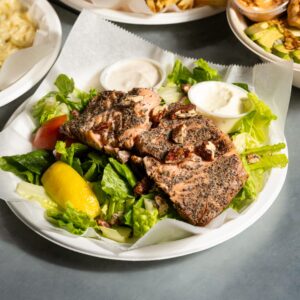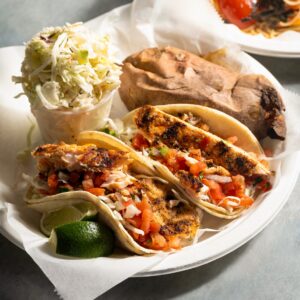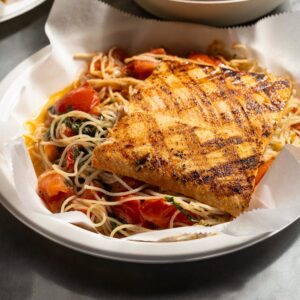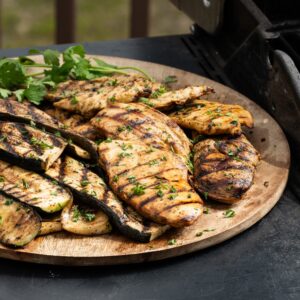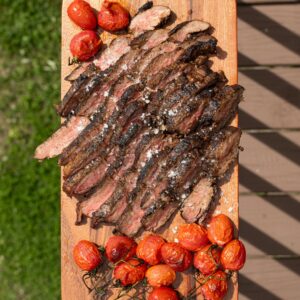Get It Done Right
| April 3, 2023
High heat, medium-high, a gentle simmer… What do all these terms mean, and do they actually make a difference in the recipe I’m making?
Generally, when one follows a recipe that requires stovetop cooking, the recipe will include a directive regarding how hot (or not so hot) the stovetop should be. This can lead to some confusion about exactly what these terms mean, or, more often than not, might be disregarded because the recipe follower doesn’t think it matters.
I’m Danielle, an avid cook and recipe developer, and I’m here to tell you that it matters very much!
In fact, it can be the difference between a perfectly delicious, full of flavor, umami-packed steak and a bitter, sadly dried out piece of meat.
The good news is, though, that once you understand the difference between all these terms and why they matter, you’ll instantly up your food game for almost no effort! I mean, you may have to adjust the fire or temperature of your stovetop, but that’s literally all I’m going to ask you to do today!
What You’re Doing and Why
Let’s dive right in and break down all these terms.
Depending on what type of stove you have, you’ll either use a number system to regulate the heat (the lower the number, the lower the heat), or you’ll see an actual flame, which increases or decreases in size and strength when you turn the dial that controls it.
For the purpose of this article, we’re going to speak about a gas range that has an actual flame, but see the sidebar for a quick guide to the number system, so that if your stove uses that to adjust the temperature, you have a reference for that too.
Every food has a different density. When we apply heat to food to achieve certain results, we need the heat to penetrate through the entire item we are cooking in order to see results. That means that when we’re sautéing onions for the purpose of say an onion jam, we need the center of each piece of onion to break down and soften before the outside of that piece of onion burns. Proper heat regulation on your stove is essential to making that happen.
For today, we’re going to use steak as a cooking guide because it’s something everyone understands and has very specific preferences regarding how they choose to eat it. The size of the flame (i.e., the amount of heat you apply to your pan) will directly affect the outcome of the steak.
Suppose you place a pan on a very large flame. The pan quickly becomes very hot. You add a few drops of oil that instantly begin to smoke and immediately place a steak on the pan. What will happen?
The outside of the steak will sear extremely quickly. You will in fact achieve a Maillard reaction, giving the steak its irresistible sear. However, because the steak was only in the pan for a few short minutes, when you cut into the steak, it will be what restaurants like to call “black and blue,” which is just a way of saying still raw in the center. Had you wanted to cook your steak to a medium or even medium-rare
doneness, you would have needed to leave the steak in the pan for longer. Then, although the inside would have been done to your liking, the exterior of the steak would have gone way past a good sear and burned.
On the flip side, if you take your steak and place it in a cold pan set over low heat, the meat will cook so slowly and gently that it will start to “sweat,” and the steam it creates will prevent the meat from ever browning. Since the steak won’t burn on the outside, you can leave it on the pan for much longer and cook the steak until it’s well done. So now you’ll have your well-done meat, but without that delicious seared exterior.
Controlling your flame and applying the right amount of fire to the pan you’re using will allow you to create a Maillard reaction, giving you a delicious sear on your steak while at the same time cooking the inside of your meat to your liking.
In order to decide what flame to use, think about your desired result. Start with a medium flame and work from there. If you like your steak medium on the inside, raise the heat just a drop. If you like your steak medium rare, turn the heat up to medium-high. If you like your steak well done, go home. Just kidding. Keep the pan on a medium flame. This will help ensure that the meat can stay in the pan with enough time to cook through without burning the outside.
One Step Ahead
Once you decide how you like your steak and the appropriate flame size, it’s time to preheat the pan. Whaaaaat? I have to preheat my pan? Mhmmm.
Remember what happened to the steak we put in the cold pan? It steamed and turned gray instead of being delicious. It was just sad. And we don’t do sad steak around here!
Preheat your pan on the flame size you have chosen so that when you put the meat in the pan you can create the Maillard reaction. This will allow the steak to immediately begin to sear, but the temperature of the pan will drop slightly after a few seconds, giving you enough time to cook the steak to your desired doneness.
(Many people prefer a heavier pan, like a cast-iron skillet or a copper-lined stainless steel pan, because of its ability to retain heat. The temperature may drop after the food is added, but only slightly, and it will rebound faster.)
In short, when you follow a recipe, pay attention to stovetop directions. You’ve already worked hard enough to buy the food and prep it. Now all you have left to do is cook it! It would be a shame to stop caring now!
Side Points
Pan Size Relative to Burner Size
The size of the pot or pan you use relative to the size of the burner you use will also make a difference. If the heat is centralized in a smaller percentage of the surface area of the cooking vessel, it will take longer to disperse the heat and retain the heat, and you may have to increase the heat a tiny bit to compensate. On the other hand, if the burner is very large and the pot or pan is smaller, you may have to decrease the heat a tiny bit to compensate for that as well.
Maillard Reaction
Named for Louis Camille Maillard, who first identified this chemical reaction in 1912, this is a series of chemical reactions that happen when heat is applied to food (and other substances). When the amino acids react with the natural sugars in a food as heat is applied, it causes the sugars to caramelize and brown.
Nonstick Cookware
Nonstick cookware is coated with chemicals to prevent sticking (duh!), but those chemicals can also burn off and/or warp when high heat is applied. It’s best to use lower flames with nonstick cookware to prevent that. In addition, the coating on a nonstick pan is not ideal for achieving a Maillard reaction. The nonstick coating can cause the temperature of the pan to drop too quickly. Although you may get some browning, it will be significantly less.
Stovetop Number Guide
Keep in mind that every company’s stovetop is slightly different. Use this guide as a starting point and learn your stove. Medium-low heat on your stove may be a 3 and it may be a 4. This is something you will become more in tune with as you use the temperatures properly.
Dial range 1–10
Very low heat: 1–2
Low heat: 3
Medium-low heat: 3–4
Medium heat: 5–6
Medium-high heat: 7–8
High heat: 9–10
(Originally featured in Family Table, Issue 838)
Oops! We could not locate your form.

